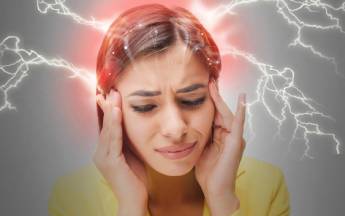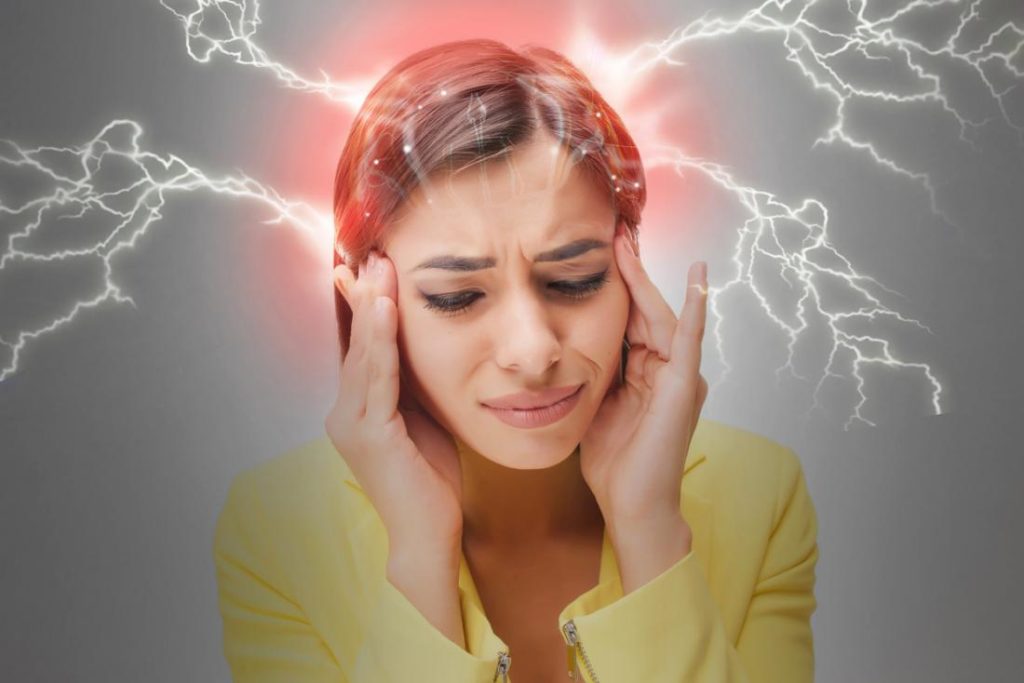
09 Sep Migraine headache definition and facts

- Migraine headache is a result of specific changes within the brain. It causes severe head pain that is often accompanied by sensitivity to light, sound, or smells.
- Common symptoms include:
- Types of migraines include:
- Common migraine has no “aura.” About 80% of migraines are common.
- Classic migraines (migraine with aura) present with an aura before the headache and are more severe than common migraines.
- A silent or acephalgic migraine is a migraine without head pain but with aura and other aspects of migraine.
- A hemiplegic migraine can have symptoms that mimic a stroke, such as weakness on one side of the body, loss of sensation, or feeling “pins and needles.”
- A retinal migraine causes temporary vision loss in one eye, which can last from minutes to months, but it is usually reversible. This is often a sign of a more serious medical problem, and patients should seek medical care.
- A chronic migraine is a migraine headache that lasts for more than 15 days per month for three consecutive months.
- Status migrainosus is a constant migraine attack that lasts more than 72 hours.
- Other types of headaches can also cause intense pain, and not all headaches are migraines. For example, some describe the pain of cluster headaches as the worst pain they have experienced. Sinus headaches can also cause pain and inflammation.
- The causes of migraines are not known. Changes in neurotransmitter levels within the brain are thought to play a role.
- The presence of typical clinical signs and symptoms help diagnose migraines.

- Migraine attacks can be triggered by many factors, for example:
- Hormonal changes
- Stress
- Strong stimuli like loud noises
- Certain foods
- Migraine treatment usually is with over-the-counter (OTC) migraine medication or prescription drugs.
- Prescription medications used to relieve the pain of migraine include triptans (a class of drugs), for example:
- sumatriptan (Imitrex, Alsuma, Imitrex STATdose System, Sumavel DosePro, Zecuity, Treximet)
- rizatriptan (Maxalt, Maxalt-MLT)
- eletriptan (Relpax)
- zolmitriptan (Zomig, Zomig-ZMT)
- naratriptan Amerge)
- almotriptan (Axert)
- frovatriptan (Frova)
- A new drug class called a calcitonin gene-related peptide receptor (CGRP-R) antagonist was approved in 2018 to treat chronic migraine. It is a periodic injection, given monthly or quarterly, to prevent migraines. This class of medication includes erenumab (Aimovig), fremanezumab (Ajovy), and galcanezumab (Emgality).
- Some patients with chronic migraine receive botulinum toxin (Botox) injections every three months to help treat their headaches.
- Lifestyle changes like eating a healthy diet and getting exercise may help reduce the frequency of migraine attacks.
- Avoid foods that trigger migraines. This also may reduce the frequency of attacks.
- Some may find exercises, for example yoga, that promote muscle relaxation are helpful in managing severe pain.
- Most people with migraines usually are able to manage their condition with a combination of medications and lifestyle changes.
- Some people may need prescription medications to decrease the frequency of headaches.
- Up to 25% of people will have a migraine at some point. Most sufferers are female. It is estimated that after adolescence, the ratio of female to male patients who experience migraines is about 3:1. There seems to be a genetic predisposition, as there is often a strong family history of migraine in patients with this disorder.
What is a migraine headache?
Although the term “migraine” is often used to describe any severe headache, a migraine headache is the result of specific physiologic changes that occur within the brain, and lead to the characteristic pain and associated symptoms of a migraine.
Migraines usually are associated with sensitivity to sound, light, and smells. A migraine attack may be accompanied by nausea or vomiting. This type of headache often involves only one side of the head, but in some cases, patients may have pain bilaterally or on both sides. The pain is often described as throbbing or pounding and it may be made worse with physical exertion.
Not all headaches represent migraines, and migraine is not the only condition that can cause severe and debilitating headaches. For example, cluster headaches are very severe headaches that affect one side of the head in a recurrent manner (occurring in a “cluster” over time). The pain is sometimes described as “drilling,” and can be worse than migraine pain in some cases. Cluster headaches are less common than migraine.
Tension headaches are a more common cause of headache. These occur due to contraction of the muscles of the scalp, face, and neck.
What is migraine with aura?
In some cases, people with migraines have specific warning symptoms, or an aura, prior to the onset of their headache. These warning signs can range from flashing lights or a blind spot in one eye to numbness or weakness involving one side of the body. The migraine aura may last for several minutes, and then resolves as the head pain begins or may last until the headache resolves. For patients who have never had an aura, it can be frightening and can mimic the symptoms of a stroke.
The most common symptoms of migraine are:
- Severe, often “pounding,” pain, usually on one side of the head
- Nausea and/or vomiting
- Sensitivity to light
- Sensitivity to sound
- Eye pain
What is an episodic migraine?
The International Headache Society defines episodic migraine as being unilateral (meaning on one side of the head), pulsing discomfort of moderate-to-severe intensity, which is aggravated by physical activity and associated with nausea and/or vomiting as well as photophobia and/or phonophobia (sensitivity to light and sound).
Other migraine headache symptoms and signs of migraines
- Many people describe their headache as a one-sided, pounding type of pain, with nausea and sensitivity to light, sound, or smells (known as photophobia, phonophobia, and osmophobia). In some cases, the discomfort may be bilateral (both sides of the head). The pain of a migraine is often graded as moderate to severe in intensity. Physical activity or exertion (walking upstairs, rushing to catch a bus or train) will worsen the symptoms.
- Up to one-third of people with migraines have an aura, or a specific neurologic symptom, before their headache begins. Frequently, the aura is a visual disturbance described as a temporary blindness that obscures part of the visual field. Some describe flashing lights in one or both eyes, sometimes surrounding a blind spot. Other symptoms, including numbness or weakness along one side, or speech disturbances, occur rarely.
- Some people describe visual symptoms of loss of vision, which lasts for less than an hour, and may or may not be associated with head pain once the vision returns, as an ocular migraine. This is also known as retinal migraine, and may be associated with symptoms similar to those described as an aura, such as blind spots, complete loss of vision in one eye, or flashing lights. Patients who experience these symptoms regularly need evaluation to exclude a primary retinal problem.
- Eye pain, which is different from sensitivity to light, is not a common component of migraine. If eye pain is persistent, or if eye pain is present and accompanied by blurred vision or loss of vision, then seek prompt evaluation.
What is the difference between a migraine vs. tension headache?
A tension headache is described as being bilateral and the pain is not pulsating, but feels like pressure or tightness. While severity can be mild-to-moderate, the headache is not disabling and there is no worsening of the pain with routine physical activity; additionally, there is no associated nausea, vomiting, photophobia, or phonophobia.
How long does a migraine last?
A migraine headache typically lasts for several hours up to several days.


No Comments